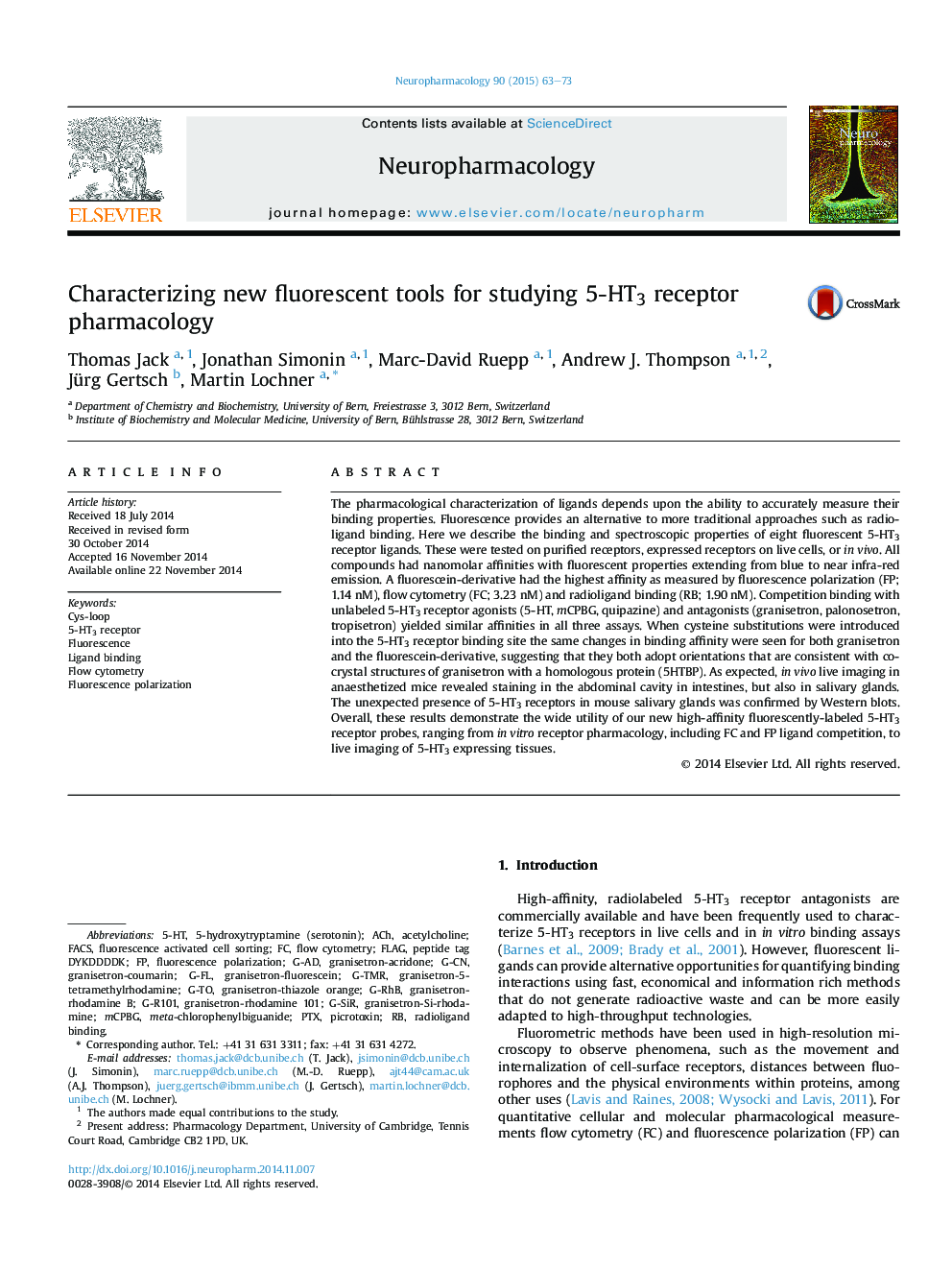| کد مقاله | کد نشریه | سال انتشار | مقاله انگلیسی | نسخه تمام متن |
|---|---|---|---|---|
| 5814105 | 1556624 | 2015 | 11 صفحه PDF | دانلود رایگان |

- Eight fluorescent ligands, all with nano-molar affinities at 5-HT3 receptors.
- Ligands with fluorescent emissions from blue to near-infrared.
- Biological utility tested on purified receptors, on live cells and in vivo.
- Practical fluorescence polarization and flow cytometry assays established.
- Live imaging in mice reveals the presence of 5-HT3 receptors in salivary glands.
The pharmacological characterization of ligands depends upon the ability to accurately measure their binding properties. Fluorescence provides an alternative to more traditional approaches such as radioligand binding. Here we describe the binding and spectroscopic properties of eight fluorescent 5-HT3 receptor ligands. These were tested on purified receptors, expressed receptors on live cells, or in vivo. All compounds had nanomolar affinities with fluorescent properties extending from blue to near infra-red emission. A fluorescein-derivative had the highest affinity as measured by fluorescence polarization (FP; 1.14 nM), flow cytometry (FC; 3.23 nM) and radioligand binding (RB; 1.90 nM). Competition binding with unlabeled 5-HT3 receptor agonists (5-HT, mCPBG, quipazine) and antagonists (granisetron, palonosetron, tropisetron) yielded similar affinities in all three assays. When cysteine substitutions were introduced into the 5-HT3 receptor binding site the same changes in binding affinity were seen for both granisetron and the fluorescein-derivative, suggesting that they both adopt orientations that are consistent with co-crystal structures of granisetron with a homologous protein (5HTBP). As expected, in vivo live imaging in anaesthetized mice revealed staining in the abdominal cavity in intestines, but also in salivary glands. The unexpected presence of 5-HT3 receptors in mouse salivary glands was confirmed by Western blots. Overall, these results demonstrate the wide utility of our new high-affinity fluorescently-labeled 5-HT3 receptor probes, ranging from in vitro receptor pharmacology, including FC and FP ligand competition, to live imaging of 5-HT3 expressing tissues.
Journal: Neuropharmacology - Volume 90, March 2015, Pages 63-73